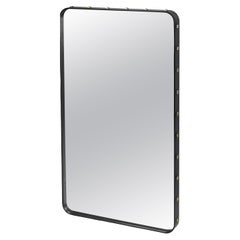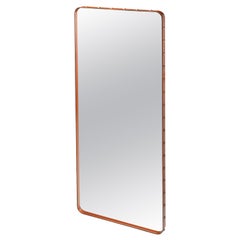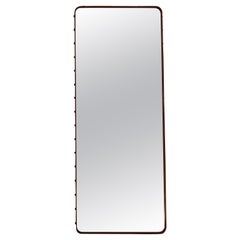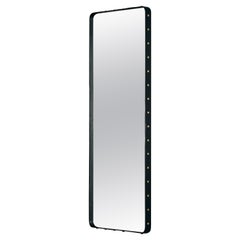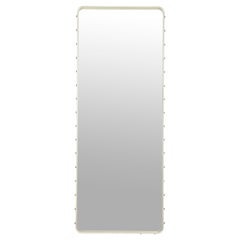Adnet Rectangulaire Mirror
21st Century and Contemporary Danish Mid-Century Modern Wall Mirrors
Brass
21st Century and Contemporary Danish Mid-Century Modern Wall Mirrors
Brass
21st Century and Contemporary Danish Mid-Century Modern Wall Mirrors
Brass
21st Century and Contemporary Danish Mid-Century Modern Wall Mirrors
Leather, Glass, Mirror
21st Century and Contemporary Danish Mid-Century Modern Wall Mirrors
Brass
People Also Browsed
Vintage 1960s Dutch Mid-Century Modern Stools
Metal
Vintage 1940s American Fireplace Tools and Chimney Pots
Brass
2010s Chinese Table Lamps
Bronze
21st Century and Contemporary Brazilian Modern Chaise Longues
Fabric, Hardwood
21st Century and Contemporary American Mid-Century Modern Flush Mount
Brass
2010s Vietnamese Dressers
Oak
21st Century and Contemporary Italian Modern Chandeliers and Pendants
Brass
2010s Mexican Brutalist Contemporary Art
Wood
21st Century and Contemporary Italian Modern Side Tables
Leather, Wood
1990s Italian Mid-Century Modern Table Lamps
Art Glass, Murano Glass
21st Century and Contemporary American Modern Bookcases
Brass, Stainless Steel, Metal
Vintage 1970s Swiss Mid-Century Modern Coffee and Cocktail Tables
Travertine
Vintage 1960s Italian Wall Lights and Sconces
Aluminum
Mid-20th Century Italian Mid-Century Modern Lounge Chairs
Brass
2010s American Modern Nesting Tables and Stacking Tables
Brass, Stainless Steel, Metal, Bronze, Sheet Metal
2010s Indian Post-Modern Chandeliers and Pendants
Brass
Jacques Adnet for sale on 1stDibs
One of the most elegant and innovative 20th-century French furniture designers, Jacques Adnet created a simple, unadorned signature style that is both trim and vigorous. He began his career in the heyday of the Art Deco era, and in the 1950s, in association with Hermès, created chairs, lamps, desks and other pieces that employed slender metal frames clad in stitched saddle leather. With such furnishings, Adnet brought a fashion sensibility to design and decor that had not been seen since the 1920s prime of the great Paris couturier-decorator Paul Poiret.
Adnet was born in a provincial town in Burgundy, where he studied design before moving, along with his twin brother, Jean, to Paris to study at the École des Arts Décoratifs. After their graduation in the early 1920s, the brothers were hired to work in the decorative-arts atelier of the department store Galeries Lafayette, under the direction of Maurice Dufrêne, an Art Deco master who developed a singularly robust and opulent style. Both Adnets showed their work at the 1925 Paris Exposition Internationale des Arts Décoratifs et Industriels Modernes — the design fair from which the term Art Deco is derived.
In 1928, Jacques Adnet took charge of the struggling La Compagnie des Arts Français, a decorative-arts firm founded by Louis Süe and André Mare that created modern furnishings that bore traces of 18th-century styling. Adnet immediately took the company in a different direction. He developed a simple lithe and lean look that incorporated industrial materials such as metal and glass, along with exotic woods and finishes such as parchment and sharkskin.
Adnet’s furniture begs to be described in terms of personalities: charming faux-bamboo side tables, suave chrome lighting and urbane club chairs. His most noted pieces, which feature sleek metal frames wrapped in Hermès leather, have a character all their own — smooth, elegant and self-assured, they inhabit a room with the same wit and grace as Jean-Paul Belmondo and Catherine Deneuve.
Find vintage Jacques Adnet furniture for sale on 1stDibs.
A Close Look at Mid-century-modern Furniture
Organically shaped, clean-lined and elegantly simple are three terms that well describe vintage mid-century modern furniture. The style, which emerged primarily in the years following World War II, is characterized by pieces that were conceived and made in an energetic, optimistic spirit by creators who believed that good design was an essential part of good living.
ORIGINS OF MID-CENTURY MODERN FURNITURE DESIGN
- Emerged during the mid-20th century
- Informed by European modernism, Bauhaus, International style, Scandinavian modernism and Frank Lloyd Wright’s architecture
- A heyday of innovation in postwar America
- Experimentation with new ideas, new materials and new forms flourished in Scandinavia, Italy, the former Czechoslovakia and elsewhere in Europe
CHARACTERISTICS OF MID-CENTURY MODERN FURNITURE DESIGN
- Simplicity, organic forms, clean lines
- A blend of neutral and bold Pop art colors
- Use of natural and man-made materials — alluring woods such as teak, rosewood and oak; steel, fiberglass and molded plywood
- Light-filled spaces with colorful upholstery
- Glass walls and an emphasis on the outdoors
- Promotion of functionality
MID-CENTURY MODERN FURNITURE DESIGNERS TO KNOW
- Charles and Ray Eames
- Eero Saarinen
- Milo Baughman
- Florence Knoll
- Harry Bertoia
- Isamu Noguchi
- George Nelson
- Danish modernists Hans Wegner and Arne Jacobsen, whose emphasis on natural materials and craftsmanship influenced American designers and vice versa
ICONIC MID-CENTURY MODERN FURNITURE DESIGNS
- Eames lounge chair
- Nelson daybed
- Florence Knoll sofa
- Egg chair
- Womb chair
- Noguchi coffee table
- Barcelona chair
VINTAGE MID-CENTURY MODERN FURNITURE ON 1STDIBS
The mid-century modern era saw leagues of postwar American architects and designers animated by new ideas and new technology. The lean, functionalist International-style architecture of Le Corbusier and Bauhaus eminences Ludwig Mies van der Rohe and Walter Gropius had been promoted in the United States during the 1930s by Philip Johnson and others. New building techniques, such as “post-and-beam” construction, allowed the International-style schemes to be realized on a small scale in open-plan houses with long walls of glass.
Materials developed for wartime use became available for domestic goods and were incorporated into mid-century modern furniture designs. Charles and Ray Eames and Eero Saarinen, who had experimented extensively with molded plywood, eagerly embraced fiberglass for pieces such as the La Chaise and the Womb chair, respectively.
Architect, writer and designer George Nelson created with his team shades for the Bubble lamp using a new translucent polymer skin and, as design director at Herman Miller, recruited the Eameses, Alexander Girard and others for projects at the legendary Michigan furniture manufacturer.
Harry Bertoia and Isamu Noguchi devised chairs and tables built of wire mesh and wire struts. Materials were repurposed too: The Danish-born designer Jens Risom created a line of chairs using surplus parachute straps for webbed seats and backrests.
The Risom lounge chair was among the first pieces of furniture commissioned and produced by celebrated manufacturer Knoll, a chief influencer in the rise of modern design in the United States, thanks to the work of Florence Knoll, the pioneering architect and designer who made the firm a leader in its field. The seating that Knoll created for office spaces — as well as pieces designed by Florence initially for commercial clients — soon became desirable for the home.
As the demand for casual, uncluttered furnishings grew, more mid-century furniture designers caught the spirit.
Classically oriented creators such as Edward Wormley, house designer for Dunbar Inc., offered such pieces as the sinuous Listen to Me chaise; the British expatriate T.H. Robsjohn-Gibbings switched gears, creating items such as the tiered, biomorphic Mesa table. There were Young Turks such as Paul McCobb, who designed holistic groups of sleek, blond wood furniture, and Milo Baughman, who espoused a West Coast aesthetic in minimalist teak dining tables and lushly upholstered chairs and sofas with angular steel frames.
Generations turn over, and mid-century modern remains arguably the most popular style going. As the collection of vintage mid-century modern chairs, dressers, coffee tables and other furniture for the living room, dining room, bedroom and elsewhere on 1stDibs demonstrates, this period saw one of the most delightful and dramatic flowerings of creativity in design history.
Finding the Right Floor-mirrors-full-length-mirrors for You
Bringing antique and vintage floor mirrors and full-length mirrors into your home is a no-brainer. The right mirror in the bedroom, bathroom and by the door in your home’s entryway — for last-minute accessorizing, of course — can make all the difference.
However, knowing where to strategically place your mirror can help illuminate your interior design choices and add a glamorous accent to any room.
A large beveled floor mirror can add depth to a space — particularly if you’re working with small rooms. It can echo the contour lines of wall paneling and make a bedroom appear larger than it is. Both floor mirrors and full-length mirrors create a window-like effect, reflecting light and brightening the room. Hanging a large mirror opposite a window will flood a room with natural light and engender a feeling of spaciousness.
Consider the placement of a mirror in the room: Displaying vases, boxes and other decorative objects in front of a mirror reflects these items, drawing attention to a prized collection and emphasizing their visual qualities for dramatic effect.
A large antique wall mirror or celebrated iconic design such as Paul Evans’s Patchwork mirror or the flashy, sensuous Ultrafragola mirror created by Ettore Sottsass can be positioned as the focal point in a living room or dining room.
When your mirror isn’t the star of the show, it can be used to enhance a focal point. Hang abstract art — a grouping of paintings or drawings, perhaps — on the wall opposite the mirror to establish narrative character in a space and create an intriguing color pattern.
It is important to consider the size, shape and frame of a mirror. Most full-length mirrors have a traditional rectangular shape, but postmodern mirrors may offer more variety. For a mirror that makes a bold statement, Art Deco mirrors typically feature geometrically pronounced frames that stand out in a room.
Add light to your interiors while providing an artistic accent to any room. Browse the selection of antique and vintage floor mirrors and full-length mirrors on 1stDibs today.
